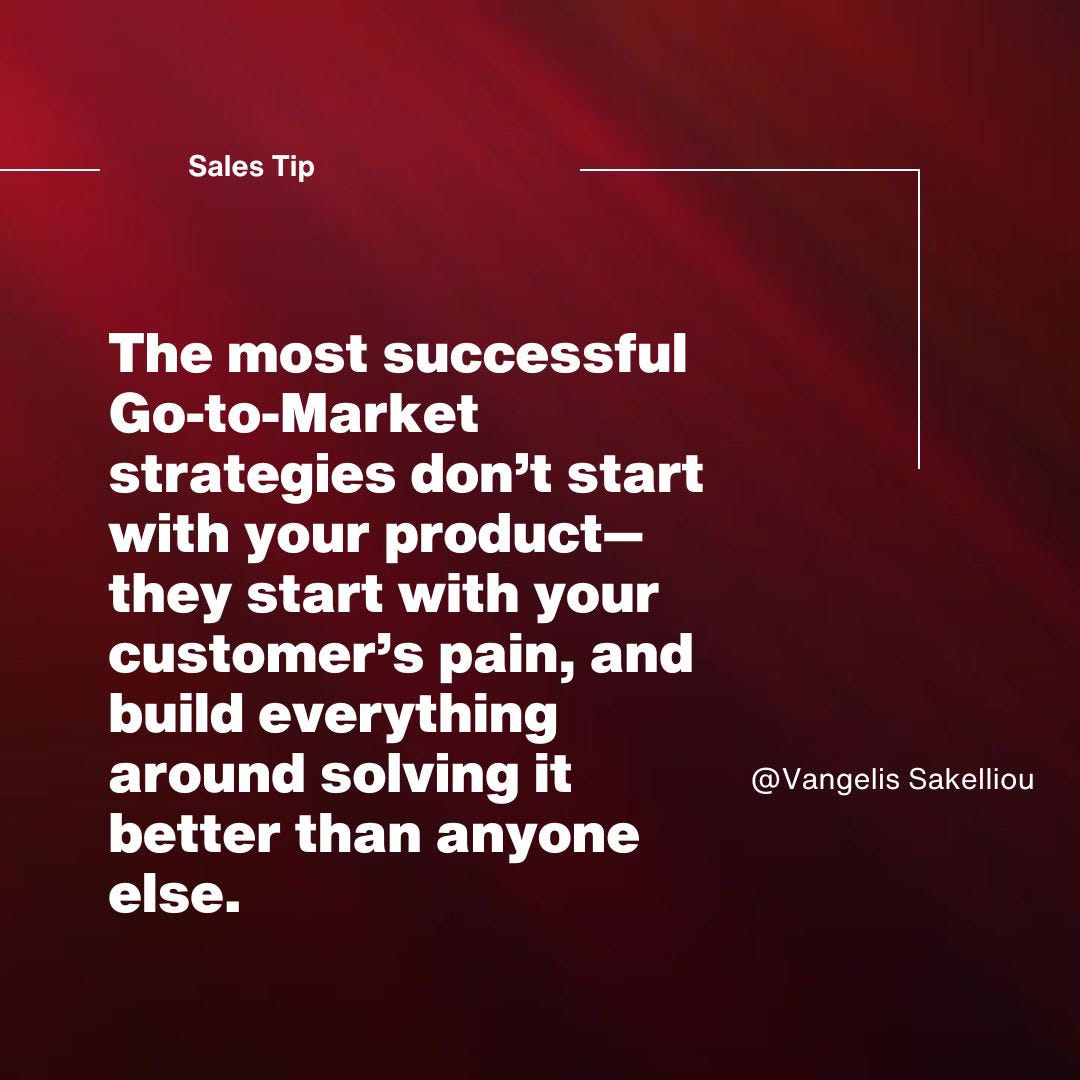Sales today isn’t about pushing products. It’s about solving customer problems. Buyers are more informed, have more options, and expect personalized experiences. If your Go-to-Market (GTM) strategy isn’t built around customer needs, you’re driving towards a wall and with high speed!
A customer-first GTM plan means understanding your audience deeply, aligning sales and marketing efforts with their pain points, and delivering solutions that create real value. Let me break down 6 key steps to build a GTM strategy that drives growth by putting customers first.
Key Takeaways
✅ Start with real customer problems, not assumptions—validate pains before building your Go-to-Market strategy.
🔍 Map your solution to specific use cases, showing clear value and differentiation in the buyer’s language.
🤝 Involve sales and customer-facing teams early—they’re closest to the market and can reveal hidden insights.
📈 Test, learn, and iterate fast—a GTM plan isn’t set in stone; refine it continuously based on feedback and traction.
Deeply Understand Your Ideal Customer
Every successful GTM (including if you are planning to expand internationally as written HERE) strategy starts with knowing your customer better than they know themselves!
· Build detailed Ideal Customer Profiles (ICPs) – Who are they? What challenges do they face?
· Μap their buyer journey – How do they discover, evaluate, and purchase solutions?
· Leverage data & insights – Use surveys, interviews, and analytics to uncover customer pain points.
Action Tip: Talk to existing customers! Their feedback is gold for refining your approach.
Align Your Offer with Customer Needs
Many companies make the mistake of fitting customers into their product instead of adapting their product to customer needs.
· Shift from product-focused to outcome-focused messaging – Sell the solution, not the features.
· Ensure a problem-solution fit – Can you clearly articulate how your product makes their life easier?
· Offer different pricing or usage models to match different customer segments.
Example: Instead of saying, “We offer AI-driven automation,” say, “We help you reduce manual work by 40%.”

I think that you wouldn’t like to miss this insightful material that I give for FREE below.
E-Book Synopsis -> How to scale up your sales organization: Click HERE
For information on the Tech Stack you need for Sales, click HERE
Craft a Clear & Compelling Value Proposition
Your value proposition should answer one simple question: Why should a customer choose you over competitors?
· Be specific – Avoid vague claims like “best-in-class” or “industry-leading.”
· Focus on measurable impact – Can you quantify time saved, revenue growth, or efficiency gains?
· Make it customer-centric – Instead of “Our tool is easy to use,” say, “You’ll be up and running in minutes.”
Action Tip: Test different value propositions in marketing campaigns and track what resonates.
Align Sales & Marketing for a Seamless Customer Experience
Marketing and sales should work as one team to provide a consistent, helpful journey for the customer.
· Use account-based marketing (ABM) to personalize outreach to high-value customers.
· Create sales enablement materials that address customer pain points (case studies, ROI calculators).
· Ensure marketing content matches the sales narrative—no mixed messages!
Action Tip: Regular sales-marketing syncs help ensure both teams stay customer-focused.
Deliver a Frictionless Buying Experience
Even the best product won’t sell if the buying process is frustrating. Make it as easy as possible for customers to say YES.
· Reduce steps in the sales process – Fewer forms, faster demos, quicker onboarding.
· Offer multiple ways to engage – Some prefer self-serve, others need high-touch sales.
· Make pricing transparent – Confusing or hidden pricing kills deals.
Example: B2B SaaS companies with a free trial or live demo convert customers 5x faster than those without.
Measure, Learn, and Optimize Continuously
A customer-first GTM strategy isn’t static—it evolves with customer behavior.
· Track key customer success metrics – Churn rate, Net Promoter Score (NPS), customer lifetime value (CLV).
· Listen to feedback & iterate – Customer conversations reveal new needs and friction points.
· Test & refine messaging – Use A/B testing to optimize what works best.
Action Tip: Set up monthly strategy reviews to adjust based on real customer insights.
Customer-First Wins Every Time
A customer-first GTM strategy supports a long-term success. By deeply understanding your customer, aligning your offer with their needs, and delivering a seamless experience, you’ll create real value that drives loyalty and revenue. I think a lot lies on sales management as I have explained HERE to cultivate a culture that embraces such behaviours.
1. Know your customer
2. Speak to their needs, not your features
3. Make it easy to buy from you
4. Optimize and evolve based on feedback
Apply these steps to your GTM strategy and I am confident you will see your customer engagement and sales soar.
Additional useful resources for you:
FREE white paper summary — How to grow up your sales internationally (let me know if you want the whole document. Click HERE
VIDEO to learn how to master the B2B consultative way and the power of being a subject matter expert. Click HERE
If you want to be part of a group of people that receive exclusive insights, register HERE.

